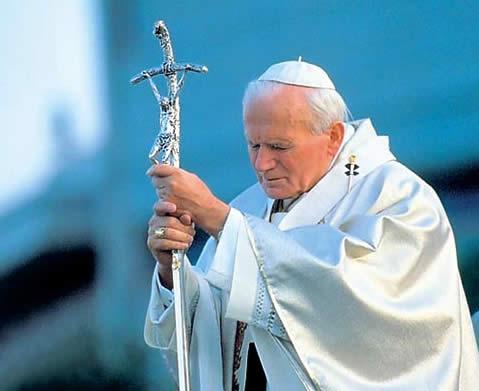Closer to Sainthood: Pope John XXIII and Pope John-Paul II

This week, the Vatican announced, that Pope Francis has pushed forward with the canonisation of Pope John-Paul II.
I imagine that the mourners who cried “santo subito” (sainthood now) during his funeral will be happy with the Argentinian pontiffs decision to attribute a second miracle to the popular Polish Pope, just eight years following his death and a mere two years since his beatification. This unprecedented, speedy decision is expected to be welcomed by most of the world’s 1.2 billion Roman Catholics.
Born, Karol Józef Wojtyła, he took up office in 1978 and reigned up until his death in 2005. John Paul, often referred to as, Blessed John Paul, played a key role in the fall of communism in Eastern Europe and his many foreign visits attracted millions to the man who gave religion, charisma.
To qualify for canonisation the late pope must have two miracles accredited to his intercession; miracles must be attributed to prayers solely directed towards him after his beatification.
Back in 2005, his successor, Pope Benedict XVI began the beatification of John Paul; just one-month after his death, with the Vatican saying, the usual five-year waiting period would be waived due to ‘exceptional circumstances’.
In a statement, the Vatican said the first of John Paul’s miracles was down to the inexplicable recovery of, Sister Marie Simon-Pierre Normand, a nun diagnosed with Parkinson's disease. After praying with fellow nuns for the intercession of the Polish pontiff, the French nun was said to be cured of the debilitating illness, which ironically the late pope had died from.
The Vatican has yet to release specific details regarding the second miracle, but sources say it concerns the healing of a woman from Costa Rica suffering from a serious brain complaint who prayed for his intercession on the very day that he was beatified.
Doctors in Costa Rica are expected to reveal more on this extraordinary case at a later stage.
The Vatican has a four-stage judicial process for each potential saint. First the candidate is called a ‘servant of God’; they then go on to be called ‘venerable’ and following this, beatification takes place, where they are declared, ‘blessed.’ After two miracles, prior to beatification are authenticated, the candidate is then canonised as a saint.
During his reign, John Paul made the process of canonisation less complicated, and through this new streamlined system, he himself went on to create more saints than all the previous popes combined.
John Paul’s canonisation will take place alongside that of another former pontiff, John XXIII, who also initiated reforms to the Church under the Second Vatican Council in the 1960s. Pope John XXIII, was himself beatified by John Paul back in 2000.
John, fondly revered as, ‘Good Pope John’ because of his kindly nature and ability to connect with the people in the street, reigned for four and a half years, from 1958 until his death by cancer in 1963. Despite no second miracle being attributed to his intercession, it’s thought to be down to similarities in personality that Pope Francis has approved the Vatican’s decision to canonise John, who was responsible for paving the way for mass to be conducted in the language of the faithful, rather than solely in Latin; thus helping to increase the number of worshippers worldwide.
The church has released no dates for the ceremonies; however they are expected to take place before the end of the year. There has been some speculation that John Paul’s may be scheduled to take place on 22 October, the anniversary of the liturgical inauguration of his 27 year papacy. Equally, 8 December; the Feast of the Immaculate Conception has been suggested as a fitting date for both men to be canonised in a joint ceremony.
You may also be interested in...
Latest property in Rome
65 m²
1 Bedrooms
165000
3 Bedrooms
1450000
1 Bedrooms
2000
260 m²
3 Bedrooms
0
3 Bedrooms
1300000












